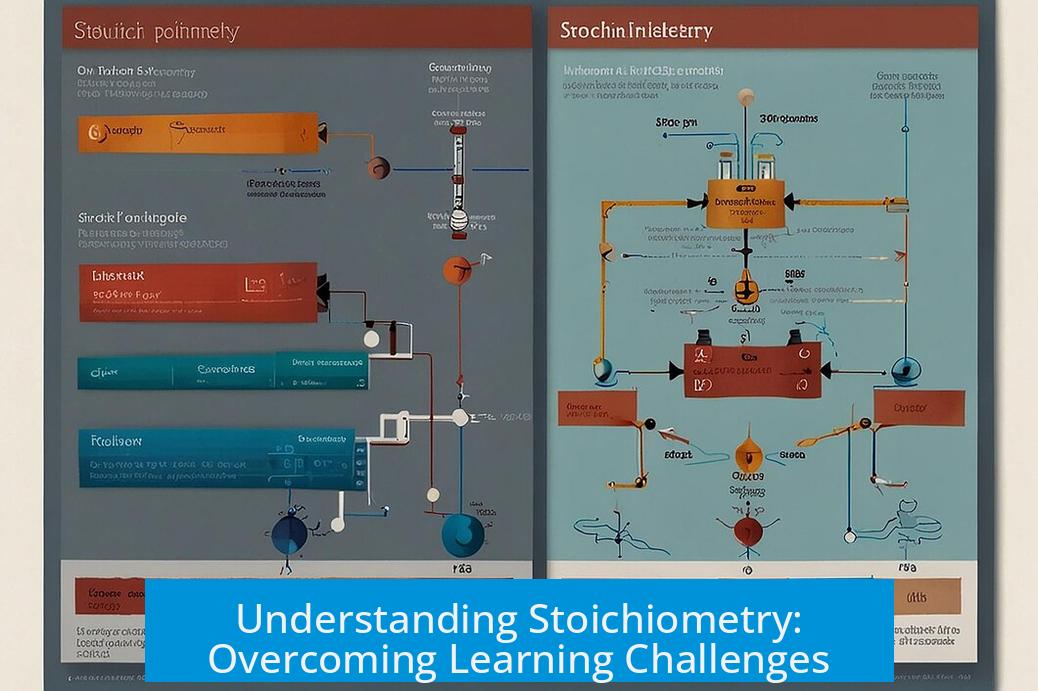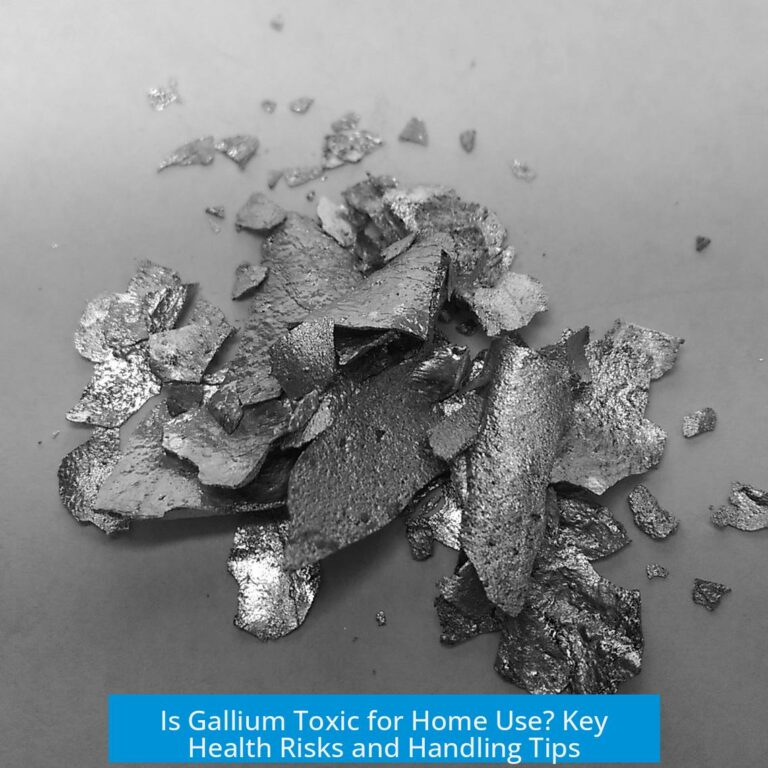Understanding Stoichiometry: Overcoming Learning Challenges

Stoichiometry involves calculating the quantities of reactants and products in chemical reactions based on mole ratios and balanced equations. It connects the mass of substances to amounts of molecules and predicts product amounts precisely. However, grasping this concept can be hard, especially without strong algebra skills and clear understanding of moles and reaction relationships.
Breaking Down the Concept of Stoichiometry
Stoichiometry in Everyday Terms
Stoichiometry can be understood by comparing it to everyday activities, like making popcorn or pancakes. Imagine you want to make popcorn. You don’t count every single kernel but use weight or volume to estimate how many kernels you have. Then, after popping, you can estimate the weight of the popped popcorn based on known averages.
- Popcorn analogy: Weight of kernels ÷ weight per kernel ≈ number of kernels; multiply by average popped weight per kernel = total popped popcorn weight.
- In chemistry: Replace kernels with reactants and popped corn with products; calculate moles of reactants from their masses to find product amounts.
Similarly, a pancake recipe helps visualize stoichiometric ratios. For example, 2 cups flour + 1 cup milk + 2 eggs + 1 tsp baking powder make 12 pancakes. If you have 5 cups of flour, how many pancakes can you make? You scale ingredients based on ratio and amounts available. Chemical reactions work the same way, but with atoms and molecules.
The Role of Moles and Balancing Chemical Equations
The mole is a counting unit much like a dozen, but for molecules or atoms. One mole equals 6.022 x 1023 units. In chemical reactions, atoms combine in fixed ratios. You cannot combine 1.5 atoms; the reaction must balance integer amounts.
To perform stoichiometric calculations accurately:
- Write the balanced chemical equation.
- Convert masses to moles using molar masses.
- Use mole ratios from the equation to relate reactants and products.
- Calculate the amount of product or needed reactant.
Balancing the equation ensures you have the correct proportional relationships of molecules to work with.
Bicycle Components as a Chemical Reaction Analogy
Consider making a bike requiring 1 frame, 2 tires, and 1 chain. If given the weight of all parts, you first convert weights to numbers of parts before determining how many bikes you can assemble.
- Converting grams or pounds into numbers of parts corresponds to converting grams to moles.
- The assembly ratio (1 frame: 2 tires: 1 chain) is like the mole ratio in a balanced chemical reaction.
- If tires are the limiting factor, the number of bikes depends on how many tire pairs exist.
This example highlights how stoichiometry involves converting mass to amounts and applying ratios to predict feasible products.
Why Stoichiometry Can Be Difficult
The Importance of Algebra in Chemistry
Stoichiometry requires working with ratios, conversions, and sometimes solving for unknowns. These tasks rely on algebra skills. Simple algebraic manipulation is essential to rearranging formulas and understanding proportional relationships.
Without basic algebra, interpreting stoichiometric problems becomes confusing and can hinder overall success in chemistry. The struggle with stoichiometry often reflects struggles with algebra concepts like:
- Solving for variables
- Manipulating equations
- Understanding ratios and proportions
Learning algebra improves one’s ability to handle stoichiometry effectively.
Getting Help to Bridge the Gap
Instructional videos may not always meet individual learning needs, especially if foundational math skills are weak. Personalized help such as tutoring often makes the difference.
- A tutor identifies specific areas of confusion.
- They can provide targeted practice and explanations.
- They help build confidence in algebra and chemistry skills.
Developing algebra proficiency helps unlock chemistry understanding, including stoichiometry.
Step-by-Step Guide to Tackling Stoichiometry Problems
- Write the balanced chemical equation to know exact mole ratios.
- Calculate molar masses of reactants and products (grams per mole).
- Convert given mass values to moles.
- Use mole ratios from the equation to find moles of desired substance.
- Convert moles back to grams if needed for final answer.
- Check for limiting reactants which restrict product amount.
Consistent practice with these steps sharpens problem-solving skills.
Sample Problem Using the Pancake Analogy
| Ingredient | Recipe Amount | Available Amount | Scaled Pancakes Made |
|---|---|---|---|
| Flour | 2 cups | 5 cups | (5 / 2) x 12 = 30 |
| Milk | 1 cup | 6 cups | (6 / 1) x 12 = 72 |
| Eggs | 2 eggs | 10 eggs | (10 / 2) x 12 = 60 |
| Limiting Ingredient | Flour (allows only 30 pancakes) |
The limiting ingredient sets the maximum pancakes that can be made, similar to limiting reactants in chemistry.
Common Mistakes When Learning Stoichiometry
- Not balancing the chemical equation before calculations.
- Confusing grams with moles.
- Ignoring limiting reactants.
- Skipping units in calculations.
- Rushing through problems without understanding ratios.
Awareness of these common errors helps students avoid pitfalls.
Additional Resources and Strategies
- Practice conversions between grams and moles using molar mass tables.
- Visualize mole ratios with physical models or online simulators.
- Study with peers or groups to discuss difficult concepts.
- Use flashcards for common molar masses and reaction types.
- Review algebra fundamentals alongside chemistry content.
Repetition and varied approaches promote comprehension.
Summary: Key Points on Stoichiometry Learning Difficulties
- Stoichiometry predicts amounts in chemical reactions by relating masses to mole ratios.
- Daily analogies, like popcorn or pancakes, clarify the idea of ratios and conversions.
- Understanding the mole and balancing equations is critical for stoichiometry.
- Strong algebra skills are essential for manipulating stoichiometry calculations.
- Receiving personalized help, such as tutoring, enhances learning outcomes.
- Practice systematically and avoid common calculation errors.
Why does stoichiometry feel so confusing even after watching videos?
Videos may explain steps, but stoichiometry relies on understanding ratios, moles, and algebra. If basic algebra is weak, the concepts won’t click. You need to grasp how quantities relate before the numbers make sense.
How can everyday analogies help me understand stoichiometry?
Analogies like making pancakes or bicycles show how parts fit into a whole. For example, just as 2 cups of flour make 12 pancakes, reactants combine in fixed ratios. This makes abstract ratios more concrete.
What role does algebra play in stoichiometry?
Algebra helps solve for unknown amounts when balancing reactions or calculating products. Without it, converting grams to moles and applying ratios becomes very difficult. Mastery of basic algebra is key.
What is the best step if I’m stuck despite trying videos and textbooks?
Seek a tutor who can guide you through algebra and stoichiometry step-by-step. Personalized help clears confusion faster than self-study alone.
How does understanding moles improve my stoichiometry skills?
Moles count molecules like dozens count items. They link mass to quantity, so you can convert grams of reactants into numbers of molecules to balance reactions properly.





Leave a Comment